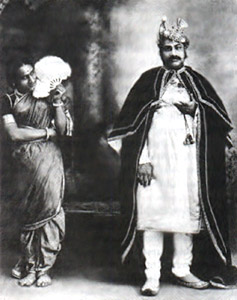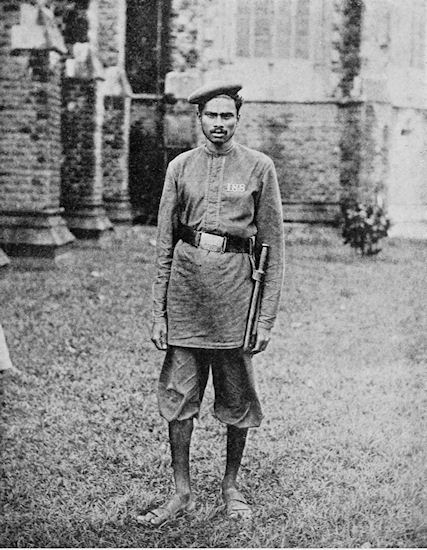कंपनी
Phalke, writing:
Those years, of the early 80's,Kirloskar's Natak company had taken the world by storm. I was too young to be taken to see anything, but I was rapt with the theatre of the Mahanagar, the city of Bombay itself. I was told stories of the theatre though, of Annasaheb's performance. People who had not been to the show, and most of our family and neighbours had not- felt that they could talk about it, so full of pride and wonder did accounts of the event make everyone! Marathi theatre had come into its own, everyone said, had learnt from Parsee and British theatre to tell our own particular stories with our songs, our kind of acting. Kirloskar conquered Bombay like that city was conquering me.
Of course the critics complained, of how he was reducing the songs, making the men sing like high pitched women, killing all sense of the sacredness of the music. But his music was like electricity, it ran through audiences and carried them away with it. When they returned home, they could not stop singing.
He was a smart man, Annasaheb, he made short singable songs, he gave everyone the illusion that they could sing. He had learnt the lessons of Nal.
( The studio somersaults and swings from side to side, like it fancies itself to be a trapeze artist. And flashing across the windows of the sumersaulting studio, are the kaleidescopic images of the city- Gothic architecture, a gas air balloon with Tukaram in it, a photograph of a native policeman nervously facing the camera. Then in a momentary silence and a darkness that falls over the windows, a large sun rises- it is a clock that is slowly being hoisted on intricate machinery. It radiates an imperial light as it goes, like Melies' sun. The studio steadies, the sun is hoisted, its 16 bells begin to chime Handel's Auld Lang Syne.
Kirloskarnatak: 'But only when Balwant Pandurang Kirloskar (popularly known as Annasaheb Kirloskar) staged his first musical play Shaakuntal on October 31, 1880 in Pune did the trend of Sangeet Natak really start. Kirloskar included 209 musical pieces in his Shaakuntal of 7 acts. They consisted of a mix of Hindustani and Carnatic classical music, and lighter music.' [1]
The Naandi- invocation from the very first play- Shakuntal, in the Sangeet Natak tradition. reproduced for the film Bal Gandharava. [2]
part of 1880 in BOOK 1- 1919

